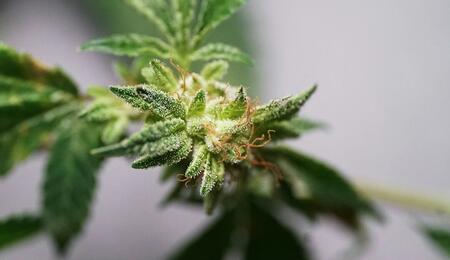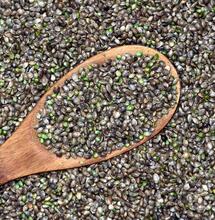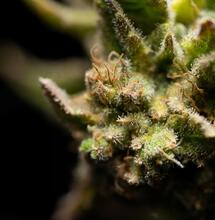New Flavor Compound Discovered in Cannabis

Researchers have identified a new flavor compound in cannabis plants, linked with citrus and sulfurous smells. The discovery was made during a larger collaboration between botanic tech company Abstrax, 710 Labs and SepSolve Analytical. The research draws attention to the substantial role that minor, non-terpenoid compounds known as flavorants can have on the aroma profiles of cannabis varieties. At the same time, it introduces the innovative practice of chemohunting.
Researchers discovered the new flavor compound through a process called chemohunting, which aims to analyze specific chemical traits in cannabis cultivars. The newly discovered flavor compound is known as 3-mercaptohexyl hexanoate (3-MHH), and it’s a member of the tropicannasulfur compound (TCSC) family. While the sciency name might not mean much to you, in essence it’s a compound that is largely associated with citrus and sulfurous aromas.
At the same time, the study establishes the innovative practice of chemohunting, which may help cannabis companies optimize their breeding programs. The full results from the study were published in the journal ACS Omega during the summer.
What is Chemohunting and Chemotyping of Cannabis Varieties?
The latest study led by researchers with California-based tech company Abstrax, introduces ‘chemohunting,’ described as a detailed approach to selective breeding that assesses cannabis phenotypes based on their complete chemical profiles or ‘chemotypes.’ Chemohunting has the potential to improve traditional phenohunting and enable breeders to achieve greater consistency and innovation when it comes to cannabis cultivation.
“Within the cannabis industry, phenohunting - the process of selecting progeny from a cross of two parents - has traditionally been more of an art than a science,” said in a statement TJ Martin, Vice President of Research at Abstrax.
“Cultivators typically grow thousands of seeds to identify plants with desired traits, such as growth vigor, pest resistance, and unique aromas. While growth characteristics can be visually monitored, selecting for aroma has been largely subjective,” he said.
Chemotyping comes into the picture as an analytical tool for breeders. It’s there to help breeders select for specific chemical traits, and make the entire process more scientific, Martin said.
Researchers Highlight the Role of Minor Flavor Compounds Found in Cannabis
The same analytical study that helped researchers discover the new flavor compound from the tropicannasulfur compound family, also shed light into other findings.
Abstrax further identified an inverse relationship between two flavorant classes, TCSCs and indole, the second of which is associated with dunk pungent smells typical for Chem-like varities. With this discovery, breeders can efficaciously chemohunt for high-TCSC and low-indole phenotypes and vice versa, which in the long run may redefine verbiage around strain names and their aromatic profiles.
“Our findings validate our previous research showing that minor, non-terpenoid compounds significantly influence the unique aroma characteristics of cannabis,” said Martin. “Even genetically similar cannabis phenotypes can exhibit a wide range of aromas, thanks to these lower concentration compounds. Ignoring them in routine analytical testing minimizes the usefulness of the data and misses out on vital information that can drive the cultivation of cannabis with specific, desirable traits,” he said.
In addition, Abstrax says that the potentiality of octanoic (OA) and decanoic acids (DA) in cannabis flower were for the first time linked to the sharp, pungent cheese aromas emblematic of some cannabis cultivars.
Abstrax plans to make both methods more widely accessible in testing labs and that it becomes a common knowledge, according to Twinkle Paryani from the company’s R&B Department.
“Chemohunting and chemotyping are revolutionary because they provide the quantitive evidence breeders have long observed anecdotally,” Paryani said. “These practices empower breeders to make more accurate selections and deepen their understanding of plant traits. They also offer valuable insights into the inheritance of specific properties without the high costs of sequencing, which can be a significant barrier for growers.”
As the study brings in a more advanced analytical testing for cannabis breeding, Abstrax plans to publish two white papers that will elaborate on the new finds related to the minor flavor compounds and how the study results can be applied in breeding programs.
Also read on Soft Secrets:
- Researchers Discover New Smell Compounds in Cannabis


















